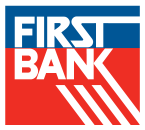In a fast paced, competitive job market, the desire for obtaining a college degree is at the top of many minds. Whether you have been dreaming of attending college since you were a child, or you’ve recently decided to attend, figuring out how to pay for your education can be difficult.
What’s the price?
Expectedly, the price of tuition has risen over time. College expenses aren’t what they used to be 50 years ago; and they certainly won’t be the same as they are now in 50 years. As the importance of a degree continues to increase, the price tag also seems to increase right along with it.
Let’s face it. College tuition is expensive, regardless if you attend a public university or a private university. The average annual cost for a four-year public university varies, depending on if you are an in-state or out-of-state student. For in-state students, the average cost is $9,716 per year. For out-of-state students, the average cost is $21,629 per year. For a four-year private university, the average cost is $35,676 for both in-state and out-of-state students.* Aside from tuition, your other expenses can include books and supplies, room and board, meal plans, and personal expenses.
What can I do?
Saving
Opening a qualified college savings account and investing early is a great method to get a head start on funding the college price tag. Over time, your funds will compound and grow. Although there are a variety of options for saving for college, you may want to consider a Coverdell Education Savings Account (CESA).
The Coverdell Education Savings account is ideal because distributions are tax free for qualified educational expenses. Plus, you can start with as little as $100 to open and contribute as much as $2,000 annually. Funds can be used for tuition, fees, room, board, books, supplies, and education-oriented computer technology and equipment.
Borrowing
Often, there are times when students and/or parents need to borrow money to fill in gaps in order to attend college. Some resources, though not inclusive, include state and federal financial aid, financial aid offered by the university, and private student loans. Each of these options has its own rules and regulations, as well as advantages and disadvantages.
Grants and scholarships
At your school, look for opportunities to apply for grants or scholarships. On the state and federal level, similar programs are available. The great thing about grants and scholarships is that they won’t have to be paid back. Though these can be helpful, they might not pay the whole college price tag. Keep in mind, you may have to look at additional resources or pay out-of-pocket in order to help cover the remaining cost.
As you work through the process of figuring out how to pay for college, remember that First Bank has many options to help your son or daughter get ahead. Feel free to speak to a knowledgeable First Bank representative today to discuss how your family can prepare or save for the rising cost of college.
* https://www.usnews.com/education/best-colleges/paying-for-college/articles/what-you-need-to-know-about-college-tuition-costs


